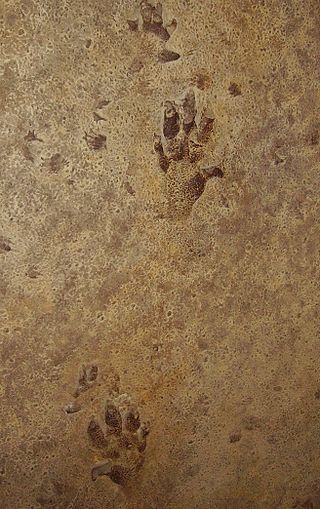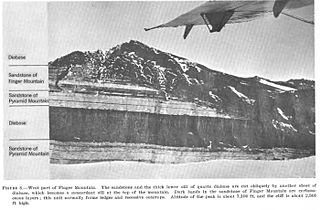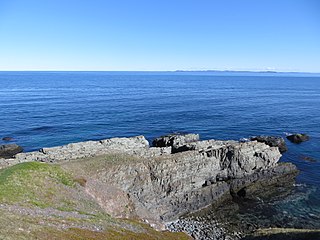
The Cambrian Period is the first geological period of the Paleozoic Era, and of the Phanerozoic Eon. The Cambrian lasted 53.4 million years from the end of the preceding Ediacaran Period 538.8 million years ago (mya) to the beginning of the Ordovician Period 485.4 mya. Its subdivisions, and its base, are somewhat in flux. The period was established as "Cambrian series" by Adam Sedgwick, who named it after Cambria, the Latin name for 'Cymru' (Wales), where Britain's Cambrian rocks are best exposed. Sedgwick identified the layer as part of his task, along with Roderick Murchison, to subdivide the large "Transition Series", although the two geologists disagreed for a while on the appropriate categorization. The Cambrian is unique in its unusually high proportion of lagerstätte sedimentary deposits, sites of exceptional preservation where "soft" parts of organisms are preserved as well as their more resistant shells. As a result, our understanding of the Cambrian biology surpasses that of some later periods.

Trilobites are extinct marine arthropods that form the class Trilobita. Trilobites form one of the earliest known groups of arthropods. The first appearance of trilobites in the fossil record defines the base of the Atdabanian stage of the Early Cambrian period and they flourished throughout the lower Paleozoic before slipping into a long decline, when, during the Devonian, all trilobite orders except the Proetida died out. The last extant trilobites finally disappeared in the mass extinction at the end of the Permian about 252 million years ago. Trilobites were among the most successful of all early animals, existing in oceans for almost 270 million years, with over 22,000 species having been described.

A Lagerstätte is a sedimentary deposit that exhibits extraordinary fossils with exceptional preservation—sometimes including preserved soft tissues. These formations may have resulted from carcass burial in an anoxic environment with minimal bacteria, thus delaying the decomposition of both gross and fine biological features until long after a durable impression was created in the surrounding matrix. Lagerstätten span geological time from the Neoproterozoic era to the present. Worldwide, some of the best examples of near-perfect fossilization are the Cambrian Maotianshan shales and Burgess Shale, the Silurian Waukesha Biota, the Devonian Hunsrück Slates and Gogo Formation, the Carboniferous Mazon Creek, the Jurassic Posidonia Shale and Solnhofen Limestone, the Cretaceous Yixian, Santana, and Agua Nueva formations, the Eocene Green River Formation, the Miocene Foulden Maar and Ashfall Fossil Beds, the Pliocene Gray Fossil Site, the Pleistocene Naracoorte Caves, the La Brea Tar Pits, and the Tanis Fossil Site.

A trace fossil, also known as an ichnofossil, is a fossil record of biological activity but not the preserved remains of the plant or animal itself. Trace fossils contrast with body fossils, which are the fossilized remains of parts of organisms' bodies, usually altered by later chemical activity or mineralization. The study of such trace fossils is ichnology and is the work of ichnologists.

Nektaspida is an extinct order of non-mineralised artiopodan arthropods. They are known from the mid-Cambrian to the upper Silurian. Originally classified as trilobites, which they superficially resemble, they are now placed as close relatives as members of the Trilobitomorpha within Artiopoda. The order is divided into three major families; Emucarididae, Liwiidae, and Naraoiidae.

Zoophycos is a somewhat cosmopolitan ichnogenus thought to be produced by moving and feeding polychaete worms.

Naraoia is a genus of small to average size marine arthropods within the family Naraoiidae, that lived from the early Cambrian to the late Silurian period. The species are characterized by a large alimentary system and sideways oriented antennas.

Diplichnites are arthropod trackways with two parallel rows of blunt to elongate, closely spaced tracks oriented approximately perpendicularly to the mid-line of the trackway. The term is more often used for the ichnofossils of this description; however, similar trackways from recent arthropods are sometimes given this name as well.

Skolithos is a common trace fossil ichnogenus that is, or was originally, an approximately vertical cylindrical burrow. It is produced by a variety of organisms in shallow marine environments globally and appear as lineated features in sedimentary rocks.

The Beacon Supergroup is a geological formation exposed in Antarctica and deposited from the Devonian to the Triassic. The unit was originally described as either a formation or sandstone, and upgraded to group and supergroup as time passed. It contains a sandy member known as the Beacon Heights Orthoquartzite.

Rusophycus is a trace fossil ichnogenus allied to Cruziana. Rusophycus is the resting trace, recording the outline of the tracemaker; Cruziana is made when the organism moved. The sculpture of Rusophycus may reveal the approximate number of legs that the tracemaker had, although striations (scratchmarks) from a single leg may overlap or be repeated.
The Burgess Shale of British Columbia is famous for its exceptional preservation of mid-Cambrian organisms. Around 69 other sites have been discovered of a similar age, with soft tissues preserved in a similar, though not identical, fashion. Additional sites with a similar form of preservation are known from the Ediacaran and Ordovician periods.

The "Cambrian substrate revolution" or "Agronomic revolution", evidenced in trace fossils, is a sudden diversification of animal burrowing during the early Cambrian period.
A number of assemblages bear fossil assemblages similar in character to that of the Burgess Shale. While many are also preserved in a similar fashion to the Burgess Shale, the term "Burgess Shale-type fauna" covers assemblages based on taxonomic criteria only.
The Cambrian explosion, Cambrian radiation,Cambrian diversification, or the Biological Big Bang refers to an interval of time approximately 538.8 million years ago in the Cambrian Period when practically all major animal phyla started appearing in the fossil record. It lasted for about 13 – 25 million years and resulted in the divergence of most modern metazoan phyla. The event was accompanied by major diversification in other groups of organisms as well.

The Stratigraphy of the Cambrian period currently has several schemes used for ordering geologic formations from the period. The International Commission on Stratigraphy−ICS scheme has set a stratotype section for the base of the Cambrian, dated quite accurately to 538.8 ± 0.2 million years ago. Russian and Chinese scientists have developed a different scheme.

Paleontology in Wisconsin refers to paleontological research occurring within or conducted by people from the U.S. state of Wisconsin. The state has fossils from the Precambrian, much of the Paleozoic, and the later part of the Cenozoic. Most of the Paleozoic rocks are marine in origin. Because of the thick blanket of Pleistocene glacial sediment that covers the rock strata in most of the state, Wisconsin’s fossil record is relatively sparse. In spite of this, certain Wisconsin paleontological occurrences provide exceptional insights concerning the history and diversity of life on Earth.

The Random Formation is a rock unit in Newfoundland dating to the early Cambrian period, dominated by tidal quartz arenites deposited in a near-shore environment, but also incorporating intertidal and open-shelf deposits, including glauconitic and mud-cracked mudstones, and red channel sandstones. It was deposited quickly and is approximately 175 m thick. The Blue Pinion Formation was originally recognized as a separate formation, but is now interpreted as an expression of the Random Formation.

The Waukesha Biota is an important fossil site located in Waukesha and Franklin, Milwaukee County within the state of Wisconsin. This biota is preserved in certain strata within the Brandon Bridge Formation, which dates to the early Silurian period. It is known for the exceptional preservation of soft-bodied organisms, including many species found nowhere else in rocks of similar age. The site's discovery was announced in 1985, leading to a plethora of discoveries. This biota is one of the few well studied Lagerstättes from the Silurian, making it important in our understanding of the period's biodiversity. Some of the species are not easily classified into known animal groups, showing that much research remains to be done on this site. Other taxa that are normally common in Silurian deposits are rare here, but trilobites are quite common.
Bergaueria is an Ediacaran–Silurian trace fossil believed to represent the dwelling trace of Cnidarians. It likely caused mixing and fluid exchange into the sediment (bioirrigation). Similar traces (Cheiichnus) can be made by rotational movement of arthropods.
















